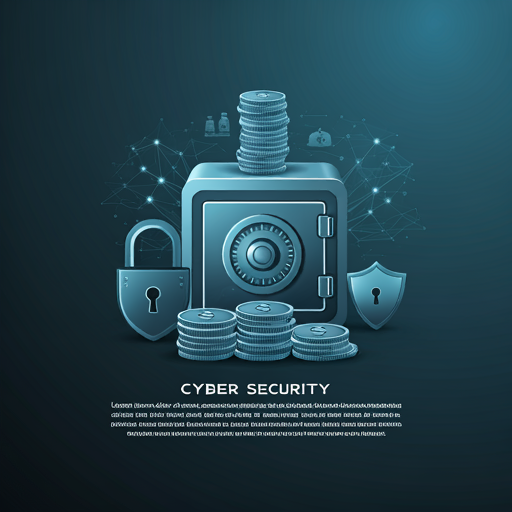Introduction to Cybersecurity in Finance
The Importance of Cybersecurity in the Financial Sector
In today’s digital landscape, cybersecurity is paramount in the financial sector. Financial institutions manage vast amounts of sensitive data, making them prime targets for cybercriminals. Protecting this data is not just a regulatory requirement; it is essential for maintaining trust. Trust is everything in finance. A single breach can lead to significant financial losses and reputational damage. This is why robust cybersecurity measures are critical. He must prioritize security protocols to safeguard assets. Implementing advanced encryption and multi-factor authentication can mitigate risks. These strategies are vital for protecting client information. The stakes are high in finance. As technology evolves, so do the threats. Staying informed is crucial for financial professionals.
Overview of Cyber Threats Facing Financial Institutions
Financial institutions face numerous cyber threats that can jeopardize their operations. For instance, ransomware attacks can encrypt critical data, demanding hefty ransoms for restoration. This can halt business activities. Additionally, phishing schemes often target employees, tricking them into revealing sensitive information. Such tactics exploit human error. Moreover, Distributed Denial of Service (DDoS) attacks can overwhelm systems, causing significant downtime. This disrupts services and erodes customer trust. The financial sector must remain vigilant. Cybersecurity investments are not optional; they are essential. Protecting assets is a priority.
Common Cybersecurity Threats in Cryptocurrency
Phishing Attacks and Social Engineering
Phishing attacks are a significant threat in the cryptocurrency space. Cybercriminals often impersonate legitimate entities to deceive users. This manipulation can lead to unauthorized access to wallets. Trust is easily exploited. Social engineering tactics further complicate the issue. Attackers may use emotional triggers to prompt hasty decisions. For example, they might create a sense of urgency. Victims often act without verifying the source. This can result in substantial financial losses. Awareness is crucial for prevention. Users must remain skeptical of unsolicited communications. Always verify before acting.
Malware and Ransomware Risks
Malware and ransomware pose significant risks in the cryptocurrency sector. These malicious software types can infiltrate systems, compromising sensitive data. Once installed, ransomware encrypts files, demanding payment for their release. This creates a dire situation for victims. Additionally, malware can facilitate unauthorized transactions, leading to financial losses. He must be aware of these threats. Regular system updates and robust antivirus solutions are essential for protection. Users should also back up their data frequently. Prevention is better than cure. Cyber hygiene is crucial in this landscape.
Best Practices for Safeguarding Cryptocurrency Assets
Implementing Strong Passwords and Two-Factor Authentication
Implementing strong passwords is essential for safeguarding cryptocurrency assets. A complex password combines letters, numbers, and symbols. This makes it harder for cybercriminals to breach accounts. Additionally, two-factor authentication (2FA) adds an extra layer of security. By requiring a second form of verification, it significantly reduces unauthorized access. He should enable 2FA wherever possible. Regularly updating passwords is also crucial. This practice minimizes the risk of long-term exposure. Users must remain vigilant against phishing attempts. Awareness is key to maintaining security. Protecting assets requires proactive measures.
Regular Software Updates and Security Patches
Regular software updates and security patches are vital for protecting cryptocurrency assets. These updates often contain fixes for vulnerabilities that cybercriminals exploit. By neglecting them, he increases the risk of a breach. Timely updates can prevent unauthorized access to raw information. Additionally, security patches enhance overall system stability. This reduces the likelihood of operational disruptions. Users should enable automatic updates whenever possible. This ensures they receive the latest protections. Staying informed about software changes is also important. Knowledge is power in cybersecurity. Regular maintenance is essential for asset security.
Regulatory Framework and Compliance
Understanding Global Regulations on Cybersecurity
Understanding global regulations on cybersecurity is crucial for financial institutions. These regulations establish standards for data protection and risk management. Compliance is not merely a legal obligation; it enhances trust with clients. He must navigate various frameworks, such as GDPR and CCPA. Each regulation has specific requirements for data handling. Non-compliance can resuit in hefty fines and reputational damage. Organizations should conduct regular audits to ensure adherence. This proactive approach mitigates potential risks. Staying informed about regulatory changes is essential. Knowledge of regulations is a competitive advantage.
Compliance Strategies for Cryptocurrency Businesses
Compliance strategies for cryptocurrency businesses are essential in today’s regulatory environment. He must implement robust Know Your Customer (KYC) and Anti-Money Laundering (AML) procedures. These measures help prevent illicit activities and build trust with regulators. Regular training for employees on compliance protocols is also crucial. This ensures everyone understands their responsibilities. Additionally, conducting thorough audits can identify potential gaps in compliance. Addressing these gaps proactively minimizes risks. Staying updated on regulatory changes is vital for ongoing compliance. Knowledge is power in this landscape. Adopting a culture of compliance is beneficial.
The Future of Cybersecurity in Finance
Emerging Technologies and Their Impact on Security
Emerging technologies are reshaping the landscape of cybersecurity in finance. Innovations such as artificial intelligence and blockchain enhance security measures. AI can analyze vast amounts of data to detect anomalies. This proactive approach helps identify threats early. Additionally, blockchain technology offers transparency and immutability, reducing fraud risks. He must consider these advancements in his security strategy. However, these technologies also introduce new vulnerabilities. Cybercriminals are quick to exploit weaknesses in emerging systems. Continuous adaptation is essential for financial institutions. Staying ahead of threats requires ongoing investment in technology. Knowledge of these trends is crucial for success.
Preparing for Future Cyber Threats
Preparing for future cyber threats requires a proactive approach. Financial institutions must invest in advanced threat detection systems. These systems can identify potential vulnerabilities before they are exploited. Regular risk assessments are essential for understanding the evolving landscape. He should prioritize employee training on cybersecurity best practices. Human error often leads to breaches. Additionally, collaboration with cybersecurity experts can enhance defenses. Staying informed about emerging threats is crucial. Knowledge is power in this field. Adapting strategies to counteract new risks is necessary. Continuous improvement is vital for long-term security.
